Today’s guest post is the third in a series of interviews by Greg Elias on The Art of Speed.
With a new Flashpoint on the horizon in 2011, longtime Flash fans are likely reminded of the 2000 miniseries with the same name. Written by Pat McGreal with art by Norm Breyfogle, the first Flashpoint was released under DC’s Elseworlds stamp in 2000.
In a world where the Flash is the only superhero, Barry Allen is paralyzed from the neck down while thwarting the assassination of John F. Kennedy. Confined to a wheelchair, Barry becomes the leading figure in the world of space science. He also dreams of a heaven revealed to be the Speed Force, has visions of an alternate-Earth Flash career with the Justice League, and is friendly with his world’s incarnation of Vandal Savage.
Through a series of “accidents” tied to Savage’s machinations, Barry, Wally West, Ralph Dibny and the Martian Manhunter are embroiled in an attempt to keep the destructive power of the flashpoint from being unleashed on the world.
Best known for his long tenure and defining work on the Batman family of titles throughout the 1980s and 1990s, Breyfogle’s Flash resume is short but memorable. In addition to Flashpoint, he illustrated a Kid Flash/Jay Garrick story in Flash 80 Page Giant #2.
We spoke with him via email about some of the techniques used on Flashpoint.
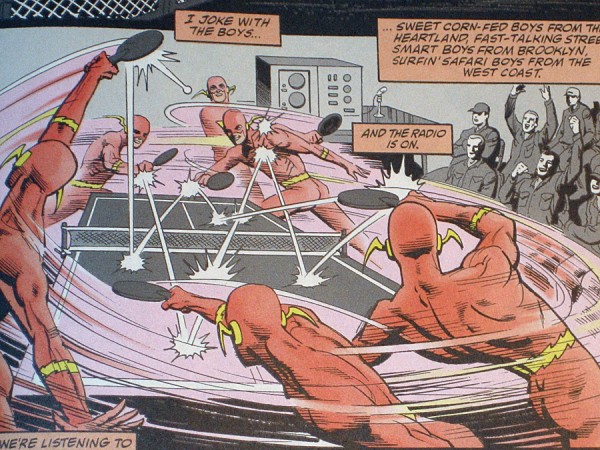
Q: The flashback scene in issue #1, with Flash “taking a bullet” for JFK, is a cornucopia of super-speed artwork! Could you break it down for us a little? What goes into creating shots like:
- Flash playing ping-pong against himself
- His time-stopping trek across the Atlantic, to Dallas and the motorcade
- Picking bullets out of the air
…each of which requires a different method of portraying super-speed?
NORM BREYFOGLE: Oh, I don’t know. I take it as it comes, and I use techniques that seem called for in depicting the scene in question.
There a number of different ways of depicting great speed in static images/illustrations. Just off the top of my head:
- multiple images/after-images
- blur, multiple parallel “motion” lines
- lighting-type SFX
- no real SFX at all; instead, the speed is depicted with the copy/writing alone, which indicates that subjectively, everything else seems frozen in time or slowed down from the speedster’s POV.
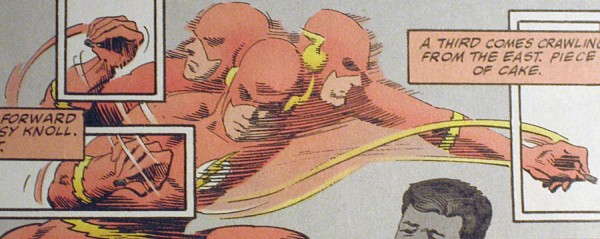
Q: What went into portraying the clone Wally’s rampage, in uniform, in issues #2 & 3? There are some things, like blowing away a bunch of cop cars, that don’t usually show up in Flash’s repertoire.
What goes into illustrating effective super-speed destruction?
NB: Dynamism, technical accuracy, realism to some degree, and appropriate use of the four techniques listed in my first answer, above.
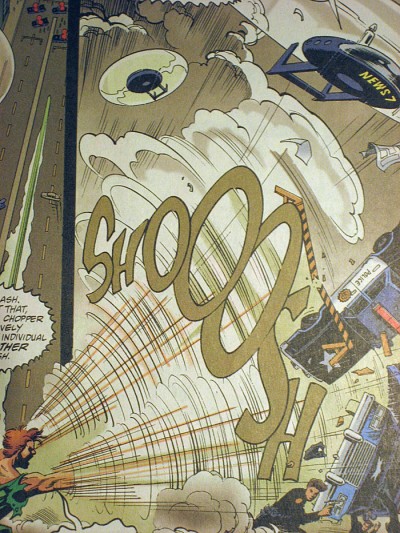
Q: The climactic scene in the third issue, where Barry races and “catches” the bolts from the Flashpoint across the Earth, is probably the most “cosmic” of the big speed sequences in the series.
Is it tough to come up with the portrayal of these more out-there scenes, set across the globe and between milliseconds, than being locked into a real-life setting?
NB: I suppose in some ways it’s more “tough.” But, it all depends on the artist, I assume. It must largely depend on what the artist is used to drawing, what his past drawing experience is.
In many ways, simple talking heads scenes might be considered more difficult to draw, because it’s more of an effort to make them dynamic and exciting. Action scenes are more INTRINSICALLY exciting, visually, it might be argued, and thus “easier” and/or more fun to draw.
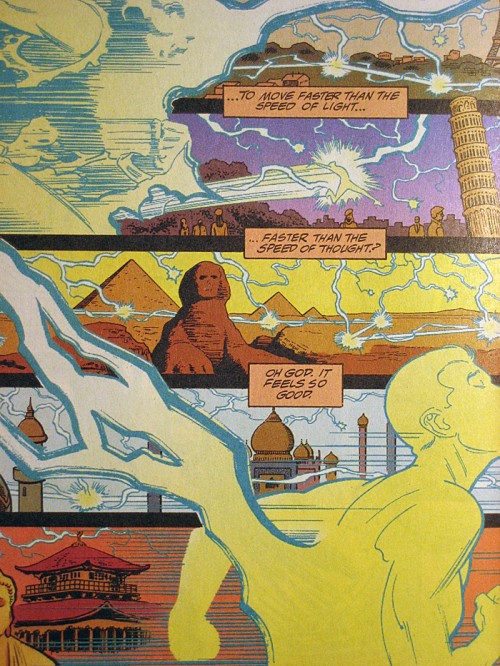
Q: You’re probably best known for your years of defining work on the Batman family of titles.
What are some of the key differences between working on a “street-level” character, and one like Flash with a unique power set?
NB: The SFX. Things are more exaggerated in proportion to the power levels involved, generally speaking.
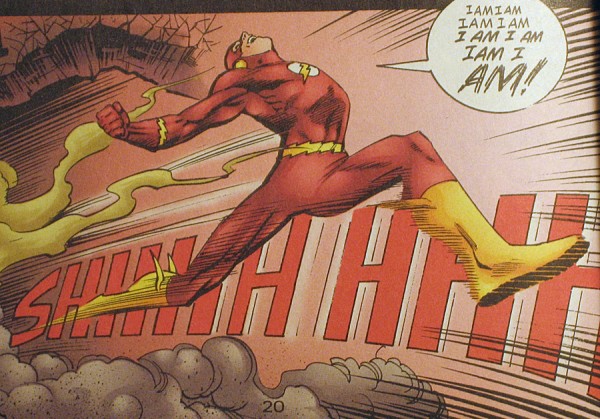
Q: Your other Flash story, from an 80-page giant, is steeped in Silver Age-Kid Flash atmosphere that is much different than Flashpoint’s.
What are your favorite types of stories to illustrate, the more fantastic or down-to-earth?
NB: I like drawing any stories that are well-written.
Q: Finally, what is your favorite speed trick of all time?
NB: That would HAVE to be moving so fast (traditionally and theoretically: faster than the speed of light) so that the time barrier is broken. Time travel is one of my top favorite science fiction concepts.
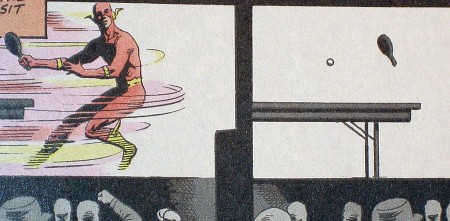

Great to here from Mr. Breyfogle! He did some wonderful work, on Flashpoint & elsewhere. (My favorite of his DC work is probably Batman: Holy Terror.)